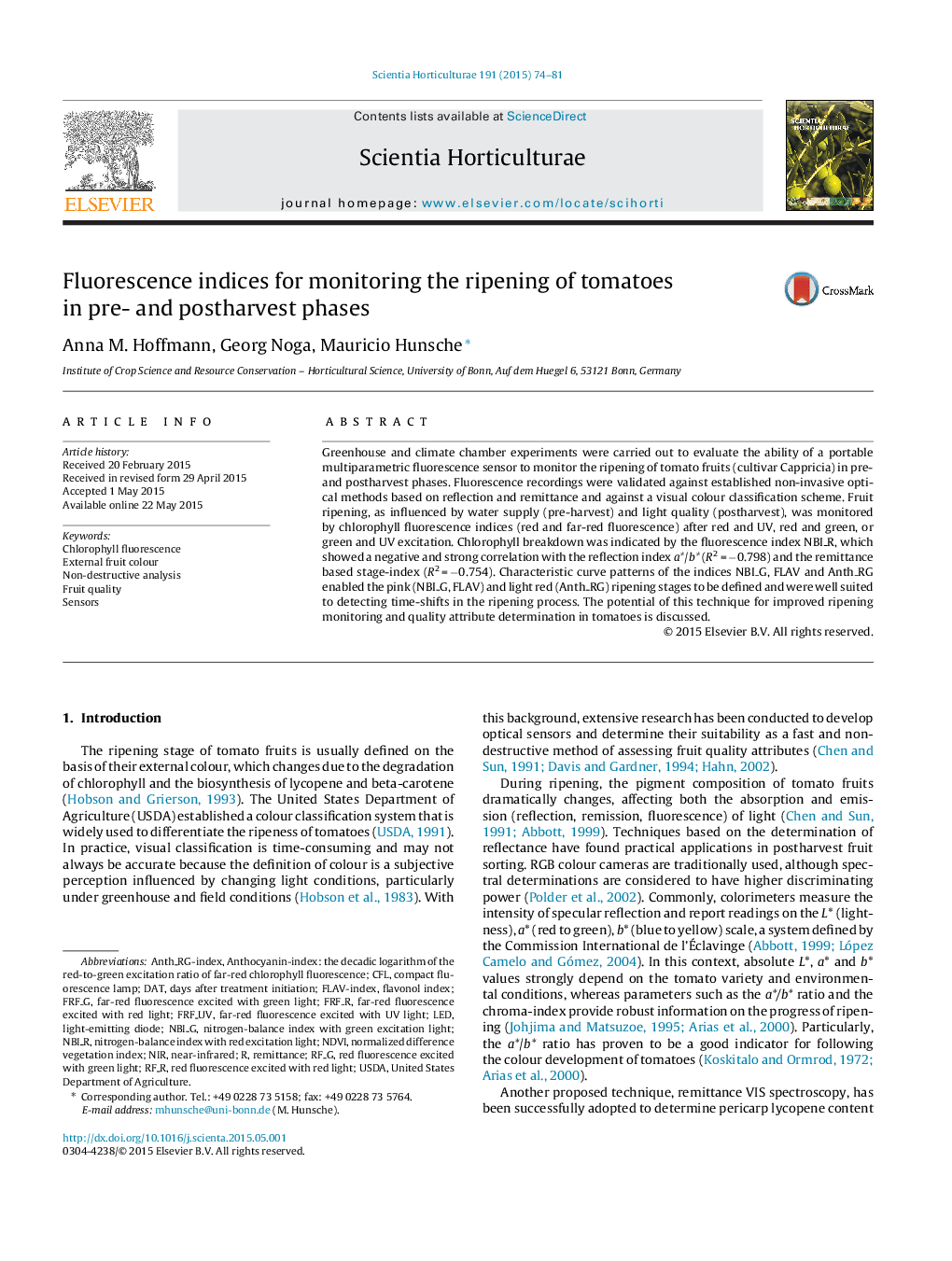| Article ID | Journal | Published Year | Pages | File Type |
|---|---|---|---|---|
| 4566299 | Scientia Horticulturae | 2015 | 8 Pages |
•Multiparametric fluorescence indices can be used for monitoring tomato ripening.•NBI_R, NBI_G, FLAV and Anth_RG best enabled the monitoring.•Abiotic stresses and storage conditions might change ripening pattern.•Fluorescence was comparable to the reflectance and remittance results.
Greenhouse and climate chamber experiments were carried out to evaluate the ability of a portable multiparametric fluorescence sensor to monitor the ripening of tomato fruits (cultivar Cappricia) in pre- and postharvest phases. Fluorescence recordings were validated against established non-invasive optical methods based on reflection and remittance and against a visual colour classification scheme. Fruit ripening, as influenced by water supply (pre-harvest) and light quality (postharvest), was monitored by chlorophyll fluorescence indices (red and far-red fluorescence) after red and UV, red and green, or green and UV excitation. Chlorophyll breakdown was indicated by the fluorescence index NBI_R, which showed a negative and strong correlation with the reflection index a*/b* (R2 = −0.798) and the remittance based stage-index (R2 = −0.754). Characteristic curve patterns of the indices NBI_G, FLAV and Anth_RG enabled the pink (NBI_G, FLAV) and light red (Anth_RG) ripening stages to be defined and were well suited to detecting time-shifts in the ripening process. The potential of this technique for improved ripening monitoring and quality attribute determination in tomatoes is discussed.
